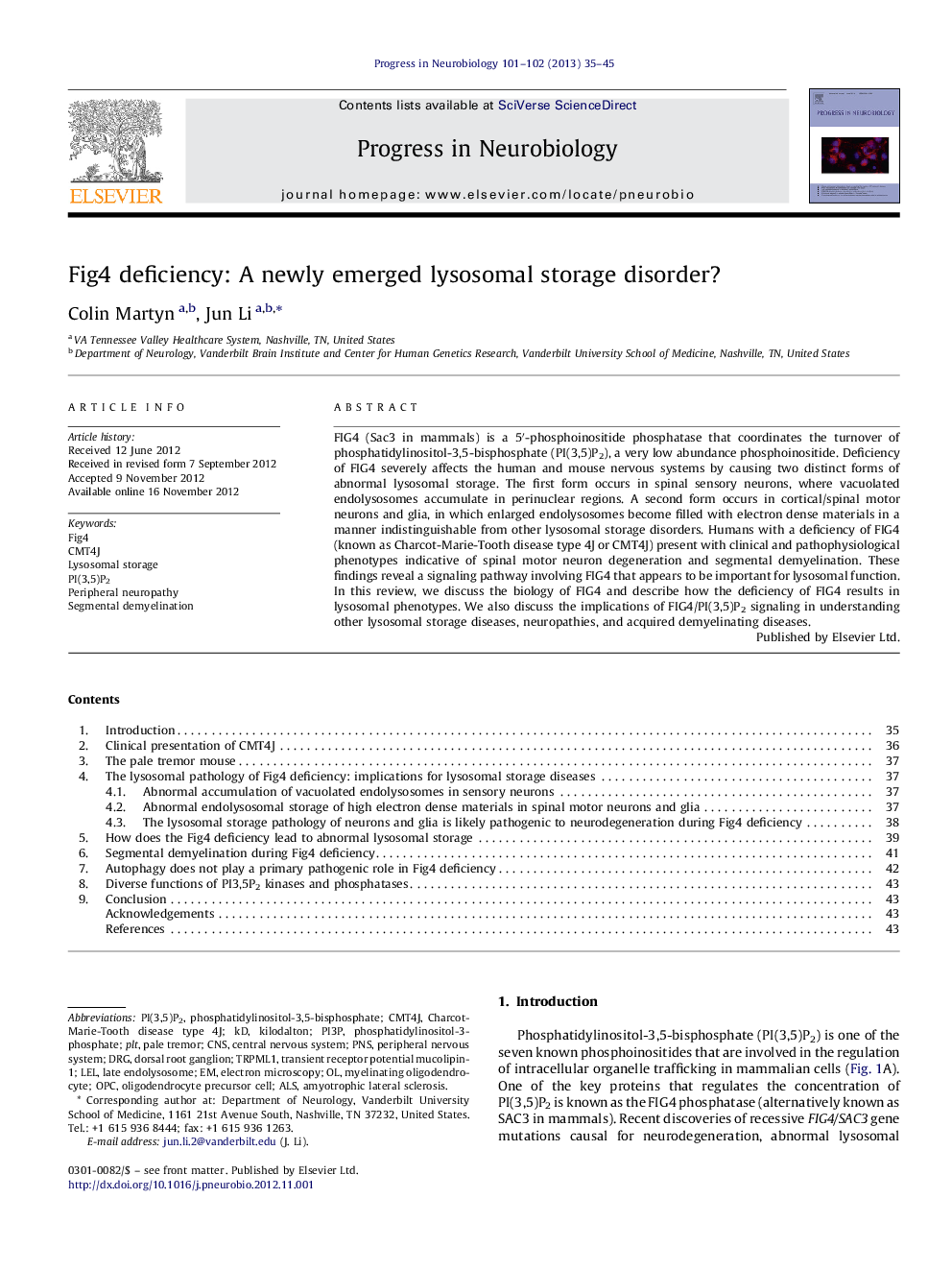| Article ID | Journal | Published Year | Pages | File Type |
|---|---|---|---|---|
| 4353382 | Progress in Neurobiology | 2013 | 11 Pages |
FIG4 (Sac3 in mammals) is a 5′-phosphoinositide phosphatase that coordinates the turnover of phosphatidylinositol-3,5-bisphosphate (PI(3,5)P2), a very low abundance phosphoinositide. Deficiency of FIG4 severely affects the human and mouse nervous systems by causing two distinct forms of abnormal lysosomal storage. The first form occurs in spinal sensory neurons, where vacuolated endolysosomes accumulate in perinuclear regions. A second form occurs in cortical/spinal motor neurons and glia, in which enlarged endolysosomes become filled with electron dense materials in a manner indistinguishable from other lysosomal storage disorders. Humans with a deficiency of FIG4 (known as Charcot-Marie-Tooth disease type 4J or CMT4J) present with clinical and pathophysiological phenotypes indicative of spinal motor neuron degeneration and segmental demyelination. These findings reveal a signaling pathway involving FIG4 that appears to be important for lysosomal function. In this review, we discuss the biology of FIG4 and describe how the deficiency of FIG4 results in lysosomal phenotypes. We also discuss the implications of FIG4/PI(3,5)P2 signaling in understanding other lysosomal storage diseases, neuropathies, and acquired demyelinating diseases.
► Loss of function of FIG4 causes severe neuronal degeneration in humans and mice. ► The predominant pathology of Fig4 deficiency is abnormal lysosomal storage. ► We discuss how the abnormal lysosomal storage contributes to pathological changes.
